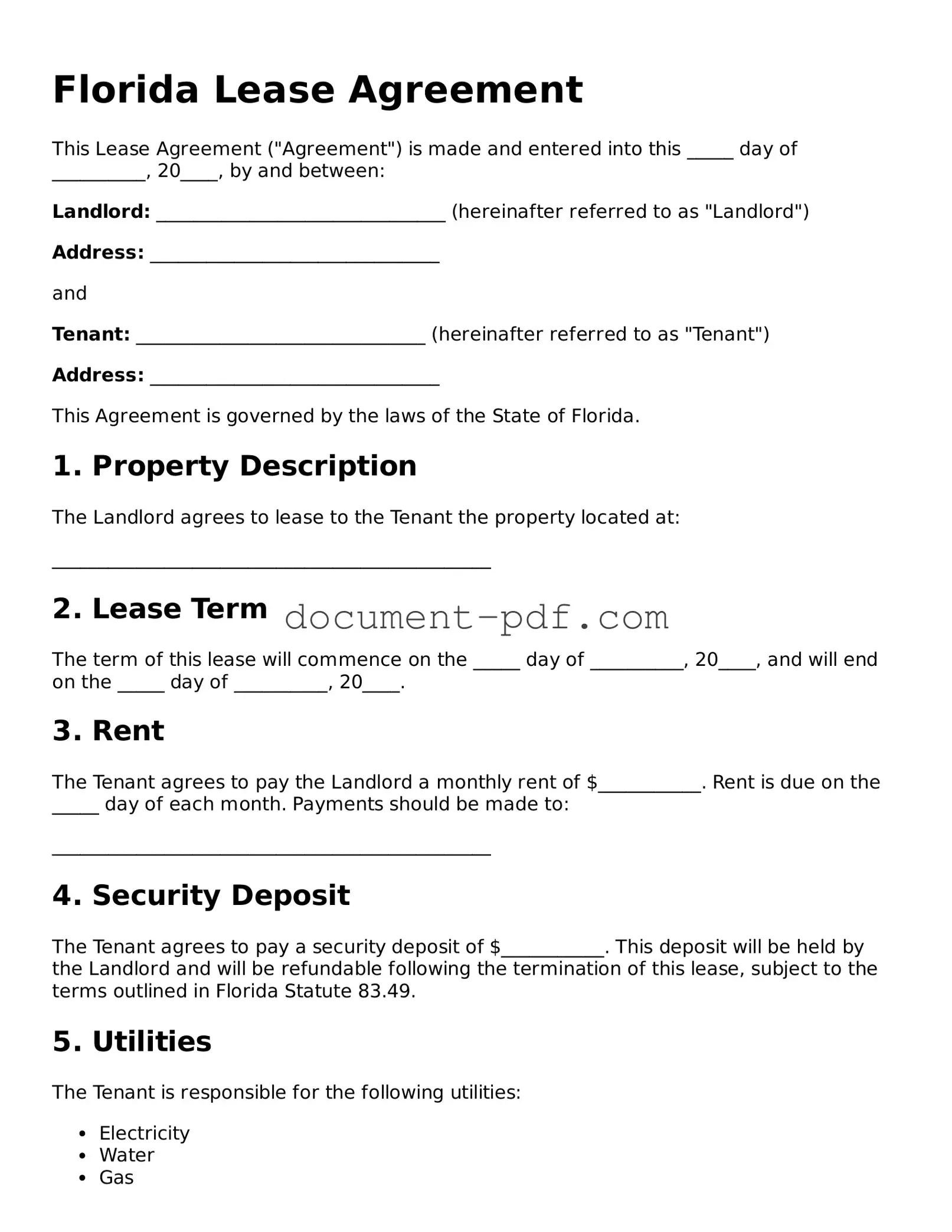Florida Lease Agreement
This Lease Agreement ("Agreement") is made and entered into this _____ day of __________, 20____, by and between:
Landlord: _______________________________ (hereinafter referred to as "Landlord")
Address: _______________________________
and
Tenant: _______________________________ (hereinafter referred to as "Tenant")
Address: _______________________________
This Agreement is governed by the laws of the State of Florida.
1. Property Description
The Landlord agrees to lease to the Tenant the property located at:
_______________________________________________
2. Lease Term
The term of this lease will commence on the _____ day of __________, 20____, and will end on the _____ day of __________, 20____.
3. Rent
The Tenant agrees to pay the Landlord a monthly rent of $___________. Rent is due on the _____ day of each month. Payments should be made to:
_______________________________________________
4. Security Deposit
The Tenant agrees to pay a security deposit of $___________. This deposit will be held by the Landlord and will be refundable following the termination of this lease, subject to the terms outlined in Florida Statute 83.49.
5. Utilities
The Tenant is responsible for the following utilities:
- Electricity
- Water
- Gas
- Internet and Phone
6. Maintenance and Repairs
The Tenant agrees to maintain the premises in a clean and sanitary manner. The Landlord is responsible for repairs not caused by Tenant's negligence.
7. Alterations
The Tenant shall not make any alterations to the property without the prior written consent of the Landlord.
8. Pets
Pets are: [Allowed/Not Allowed]. If allowed, an additional pet deposit of $___________ is required.
9. Termination
Upon termination of the Lease, the Tenant must vacate the premises and return keys to the Landlord. Notice of intent to terminate must be provided in writing _____ days prior to lease expiration.
10. Governing Law
This Agreement will be governed by the laws of the State of Florida.
IN WITNESS WHEREOF, the parties hereby affix their signatures on this _____ day of __________, 20____.
Landlord Signature: _______________________________
Date: _______________________________
Tenant Signature: _______________________________
Date: _______________________________
